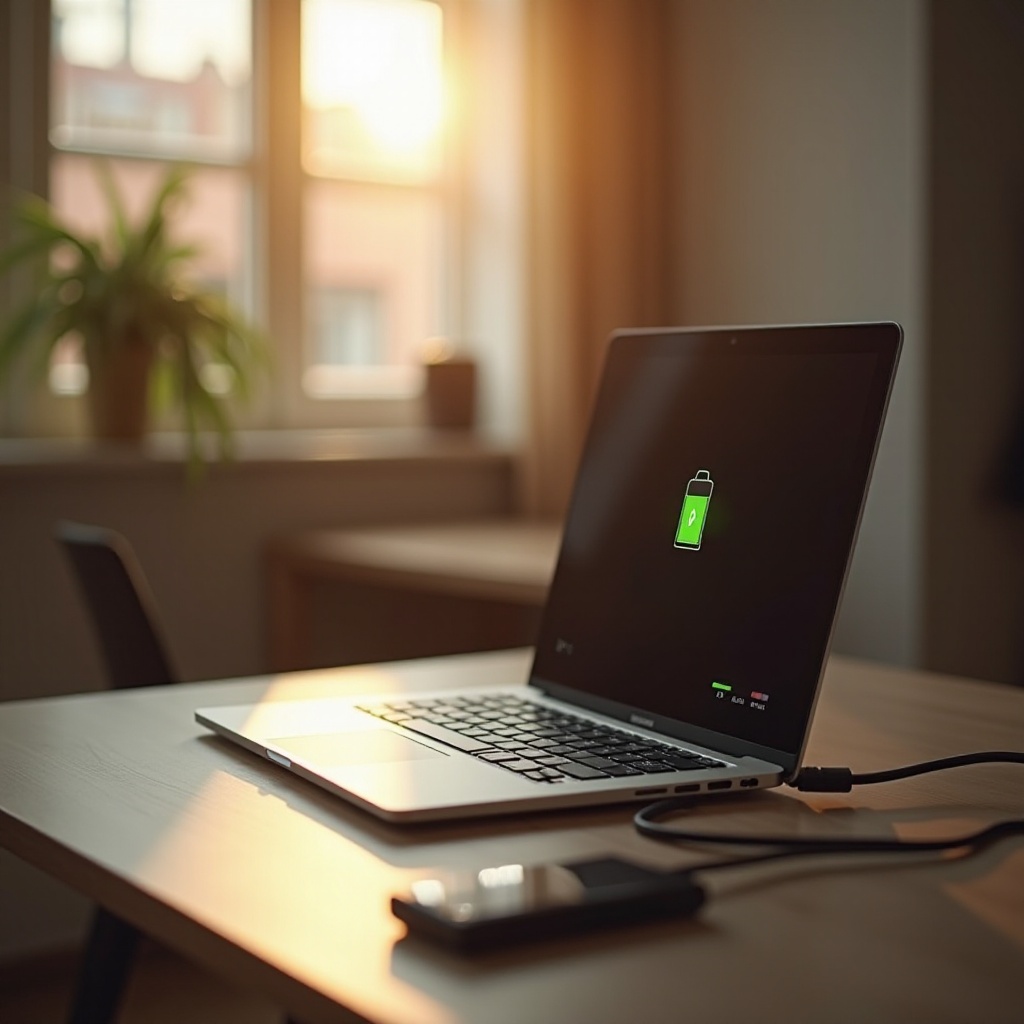Introduction
In our tech-driven world, laptops have woven themselves into the fabric of daily life, making the question of whether leaving them plugged in can ruin the battery a universal concern. As laptops continue to be indispensable tools, understanding how our charging habits affect battery life becomes increasingly important. In this article, we will examine the intricacies of battery health and whether constant charging is detrimental, considering both scientific insights and technological advancements.

Understanding Laptop Battery Technology
To get to grips with ideal charging habits, it is crucial to understand how laptop batteries function. Predominantly, today’s laptops are powered by lithium-ion batteries, renowned for their energy efficiency and long lifespan.
Basics of Lithium-ion Batteries
Lithium-ion batteries are the favored choice due to their high energy density and efficiency. Unlike older battery types, these cells can store significant amounts of power, facilitating extended use. However, they necessitate careful management to maximize their lifespan.
How Charging Cycles Affect Battery Life
At the core of battery management is the understanding of charging cycles—a cycle is a full discharge from 0% to 100% and subsequent recharge. Over time, as the number of cycles increases, the battery’s capacity to maintain a charge diminishes. It’s critical to track and manage these cycles to sustain battery health. Recognizing this foundational technology helps lay the groundwork for understanding how charging habits influence battery degradation over time.
The Science Behind Battery Degradation
Battery wear and tear is inevitable, but certain elements can expedite the process. It’s important to discern these factors to dispel myths surrounding battery care.
Factors Contributing to Battery Wear
Temperature extremes, charging cycles, and usage habits all contribute to battery degradation. High temperatures, in particular, are notorious for accelerating wear, while frequent complete discharges put stress on the battery cells.
The Myth of Overcharging
A prevalent belief is that overcharging ruins batteries. Modern lithium-ion batteries are equipped to handle overcharge scenarios as they cease to accept power once full capacity is achieved. Nonetheless, prolonged charging in high heat conditions can lead to heat-related degradation. Armed with this understanding, users can cultivate charging habits conducive to optimal battery health.

Practical Charging Habits for Optimal Battery Health
Incorporating thoughtful charging practices can substantially extend the battery lifespan. But what constitutes beneficial charging behavior? Let’s delve into recommended practices and the essential tools for health monitoring.
Recommended Charging Practices
To extend battery longevity, adhere to these guidelines:
- Refrain from allowing the battery to deplete entirely before recharging.
- Maintain a charge level between 20% and 80% where feasible.
- Unplug the charger once fully charged if the laptop is not being used.
Tools for Monitoring Battery Health
Employ built-in tools such as Battery Health Management on macOS or third-party software like BatteryCare for Windows to help monitor status and optimize performance. These programs offer insights into charge cycles, temperature, and health assessments, empowering users to manage their battery more effectively.
Modern Laptops and Built-in Battery Protection
Technological advancements have introduced modern solutions to the age-old issue of battery degradation. Familiarity with these innovations enables users to leverage them to maintain optimal battery health.
Innovations in Battery Management Systems
Many new laptops come equipped with intelligent battery management systems that oversee charge and discharge activities. These systems actively adapt to users’ habits, adjusting dynamics to mitigate wear.
How New Technologies Prevent Overcharging
Today’s battery management technologies incorporate smart charging features, automating the halt of power intake once the battery is full. This functionality is particularly effective during prolonged connection periods. Being informed of these innovations assures users that modern technology has effectively reduced the need for constant unplugging.

Real-World Scenarios: When to Keep Plugged In and When to Unplug
While new laptop management systems are incredibly useful, understanding when to unplug remains valuable for optimal battery longevity. Recognizing usage patterns and their implications can guide informed decisions.
Usage Patterns and Battery Impact
How you use your laptop—whether as a stationary workstation or a mobile device—dictates your charging strategy. A device used as a desktop replacement may require more frequent unplugging to avoid overheating, whereas portable use demands maintaining certain charge levels to ensure mobility.
Balancing Convenience with Care
Finding a balance between convenience and battery care is crucial. Practically, this means that during long working sessions, it might be necessary to stay plugged in. However, when idle, or if you plan to move away from power sources, conserving battery with proper management is wise. By understanding these scenarios, users can align their habits with the goal of extended device longevity.
Conclusion
While the question ‘does leaving a laptop plugged in ruin the battery?’ appears straightforward, it involves myriad factors, including advancements in battery technology and management systems. By mastering the basics of lithium-ion battery operation and becoming acquainted with modern protection features, users can establish charging practices that enhance battery longevity. Thoughtful charging habits, using monitoring tools, and leveraging the protective systems in contemporary devices will ensure that your laptop battery remains in prime condition.
Frequently Asked Questions
Does leaving my laptop plugged in overnight damage the battery?
Leaving your laptop plugged in overnight is generally safe due to battery management systems that stop charging once the battery is full.
How often should I let my laptop battery drain completely?
It’s best to avoid frequently draining your battery to 0%. Aim for partial discharges between 20% and 80%.
What tools can I use to monitor my laptop’s battery health?
BatteryCare for Windows and built-in tools like Battery Health Management for macOS are excellent for monitoring battery health.